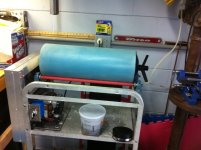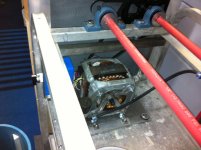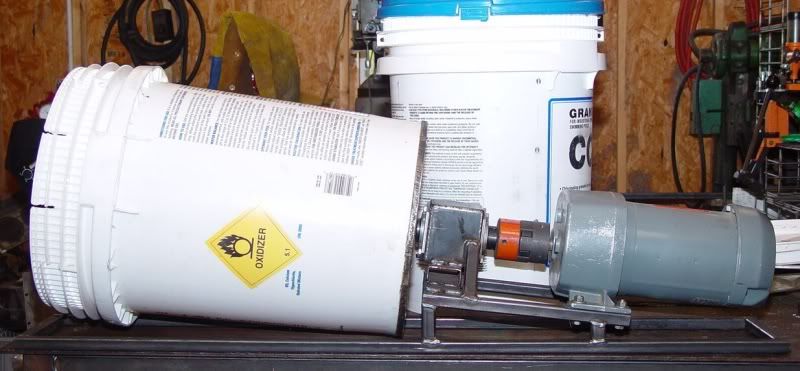may the force be with you..........
Hartcreek,
Although I'm sure your kind and thoughtful corrections were offered from a desire to inform rather than impugn, I must refer you to this "not a force" definition from Wikipedia:
Centrifugal force (from Latin centrum, meaning "center", and fugere, meaning "to flee"[1][2]) is the apparent force that draws a rotating body away from the center of rotation. It is caused by the inertia of the body. In Newtonian mechanics, the term centrifugal force is used to refer to one of two distinct concepts: an inertial force (also called a "fictitious" force) observed in a non-inertial reference frame, and as per the newton third law of motion it is also the force equal and opposite reaction to a centripetal force.
The concept of centrifugal force is applied in rotating devices such as centrifuges, centrifugal pumps, centrifugal governors, centrifugal clutches, etc., as well as in centrifugal railways, planetary orbits, banked curves, etc. Some aspects of these situations can be analyzed in terms of the fictitious force in the rotating coordinate system, while other aspects additionally require the involvement of the reactive centrifugal force.
A Centripetal force (from Latin centrum "center" and petere "to seek"[1]) is a force that makes a body follow a curved path. Its direction is always orthogonal to the velocity of the body and towards the fixed point of the instantaneous center of curvature of the path. Isaac Newton described it as "a force by which bodies are drawn or impelled, or in any way tend, towards a point as to a centre."[2]
One common example involving centripetal force is the case in which a body moves with uniform speed along a circular path. The centripetal force is directed at right angles to the motion and also along the radius towards the centre of the circular path.[3][4] The mathematical description was derived in 1659 by Dutch physicist Christiaan Huygens.[5]
I may very well be wrong, but isn't that apparent force holding something (brass cases) against the outside of the spinning cylinder and preventing the brass from moving is akin to a centrifugal clutch as referred to in the definition for centrifugal force. In every definition I have found for centripetal force, the example of planetary orbits are cited.
so back to a home built or commercially available drum type tumbler, the appropriate restriction of RPMs must be calculated to prevent the "dark side of the force" from pinning the media and brass against the cylinder.
and yes at an optimal rotational speed and just right volume of contents, I'm sure you can get brass to tumble in a smooth round drum.
But as so many commercial drum tumbler manufactures seem to have discovered, efficiency of the tumbling (agitation) is increased by use of other than perfectly smooth round cylinders.
In the end I guess it depends on what we are trying to do with the drum tumbler, Polish stones, glass and plastic, or tumble clean a bunch of dirty brass.






